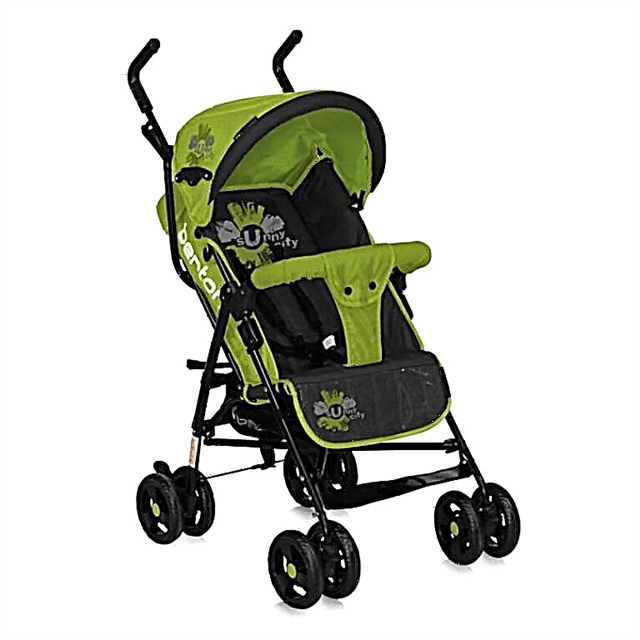It's no secret that breast milk is the healthiest product most suitable for feeding newborn babies. But the importance of taking into account the difficulties that accompany breastfeeding is evidenced by the fact that the shelves with formulas are growing, and there are more and more breastfeeding consultants. Let's talk about how to breastfeed properly. And how to turn feeding time into moments of relaxation and emotional closeness.
First rule: the right mood for mom
A woman, while still pregnant, must make a clear decision to breastfeed. This forms the dominant in the brain for the formation and development of lactation. Correct breastfeeding is impossible without an internal installation. The support of family and friends in this matter is important.
Second rule: first feeding of an infant
Ideally, the first attachment of the newborn is carried out in the delivery room. Early contact promotes the development of lactation and the colonization of the skin and intestines of the newborn with bifidum flora. How to properly apply a newborn for feeding, the medical staff will show. If the condition of the child or postpartum woman does not allow this, the first attachment to the breast is postponed. If the woman is in a satisfactory condition, the medical staff teaches self-expression. This skill will prevent the extinction of milk production and the development of lactostasis. In the absence of contraindications, the child can be fed with expressed milk during a separate stay.
Third rule: correct attachment of the baby to the breast
The problem of how to properly attach a baby to the breast, especially for the first time, is very important. How to breastfeed, the newborn still does not know. And mom needs to remember or learn how how to properly breastfeed your baby:
- immediately before feeding, the mother needs to wash her hands and douse her breasts with warm water;
- decide on a posture for feeding. This is usually sitting (reclining) or standing (after episiotomy);
- the child is placed on the bend of the elbow, the other hand brings the nipple as close as possible to the baby's mouth;
- obeying reflexes, the baby himself will grab the nipple and begin to suck;
- the breast should be given so that the baby captures the nipple and almost the entire areola with his mouth. At the same time, his lower lip will be twisted slightly, the chin and nose touch the chest.
The child's nose should not sink. How to properly apply the baby for feeding is also important for the mother's health. If breastfeeding is not correct for a newborn, several breast problems can be acquired. First of all, it is maceration and cracked nipples.
- breastfeeding a newborn, especially the first few days, should be no more than 20 minutes each. This will allow the delicate skin of the nipples to harden and get used to the new effects.
This often does not work; the child may be restless or overweight and constantly demand food. In such cases, the nursing mother needs to arrange air baths more often and lubricate the nipples with healing ointments, such as Bepanten.
- one feeding - one breast. If the child ate everything from it and did not eat, offer a second one. Start the next feeding with the last one. So the baby will receive not only the front milk, but also the rear milk.
Fourth rule: signs of milk production and flow into the breast
The symptoms of lactation are as follows:
- tingling or tightness in your chest;
- the release of milk while the baby is crying;
- for each sucking of the baby there is a sip of milk;
- leaking milk from the free breast during feeding.
These signs indicate the formed active reflex of oxytocin. Lactation is well established.
Fifth rule: feeding on demand
Feeding a newborn baby is necessary frequently. In Soviet times, there were rules according to which breastfeeding was carried out every three hours and no more than twenty minutes. Nowadays it is recommended to feed the baby on demand. Give breast literally at the first squeak. Especially capricious and demanding children almost every hour. This allows you to feed your baby and give him a feeling of warmth and care.
Frequent attachments relieve the need for compulsory expression and prevent lactostasis. And night feeds will serve as an excellent stimulation of the main lactation hormone - prolactin.

How much to breastfeed in time is ideally determined by the baby himself. If you turned away or fell asleep, it means that you are full. Over time, the baby will eat less often.
Sixth rule: sufficiency of feeding
In the process of its evolution, human milk goes through certain stages: colostrum, transitional, mature milk. Their quantity and quality composition ideally meets the needs of the newborn. Early and late milk is also excreted. The first is produced at the very beginning of feeding, rich in water and proteins. The second comes from the back of the mammary gland, it contains more fat. It is important for a baby to get both.
The Miteravel Plus complex can supplement the diet of both mothers and children (through milk) with the necessary vitamins and microelements. In addition to folic acid, iodine and iron, Miteravel Plus contains those elements that nursing mothers often lack: zinc, molybdenum, selenium, as well as vitamins and essential fatty acids Omega-3.
Just 1 capsule per day takes into account the daily needs for vitamins and minerals. Miteravel plus contributes to the development of a healthy child and the preservation of the mother's health.
There are times when it seems to mom that she does not have milk and the child is not full. To determine the adequacy of feeding, there are certain criteria:
- restoration of body weight at birth by the 10th day of life with an initial loss of 10%;
- 6 - 18 wet diapers per day;
- the child poops 6 - 10 times a day;
- positive oxytocin reflex;
- audible swallowing of the baby while sucking.
Seventh rule: accounting possible feeding problems
- flat or inverted nipples... In some cases, by the time of childbirth, this difficulty resolves itself. Others must remember that the baby, when sucking, should capture both the nipple and most of the areola. Try to stretch the nipple yourself before feeding. Find a suitable feeding position. For many mothers, a comfortable position is "from under the arm." Use silicone pads. If the breast is tight and the newborn has a hard time sucking from it, express. The breasts will become softer in 1 - 2 weeks. And the child will not be deprived of mother's milk.
There is no need to try to "stretch" the nipples before delivery. Excessive stimulation will lead to an increase in uterine tone. Over time, an actively sucking child will normalize everything.
- cracked nipples... The basis of prevention is proper attachment to the breast. If cracks appear, use silicone pads. Apply lanolin ointment and Bepanten as often as possible. If the cracks are deep and the feeding is painful, use a breast pump;
- milk outflow... Easily solved by using special inserts. They are disposable and reusable;
- There is a lot of milk, and the child chokes on it... Strain some of the front milk. When feeding, it will flow out under less pressure;
- swelling of the mammary glands... Occurs when milk overflows. The chest is painful, swollen, hot to the touch and very tight. Milk does not flow out of it. When this problem occurs, it is necessary to remove the milk from the breast faster. Give your baby a shot or pump often. Take a warm shower before feeding. Massage your breasts gently. This will improve churn. Apply a cold compress to reduce swelling after feeding;
- lactostasis and mastitis... Occur when the milk ducts are blocked. The body temperature rises, the chest hurts, the place of stagnation turns to stone. Expression is painful. A warm shower, gentle breast massage and frequent latching of a baby come to the rescue. When an infection joins, it is necessary to take antibiotics.
Infectious mastitis is a formidable complication that requires medical attention. Failure to convert is fraught with surgical intervention up to the loss of the breast.
- lactation crises... They develop at 3 - 6 weeks, at 3 - 4 and 7 - 8 months of a child's life. During these periods, the most important thing is to apply more often and be sure to feed the baby at night. Drink lemon balm, fennel and cumin teas. Rest and eat well.
Feeding your baby with breast milk is a time consuming but naturally delightful process. Remember this and everything will work out.
Article rating:



